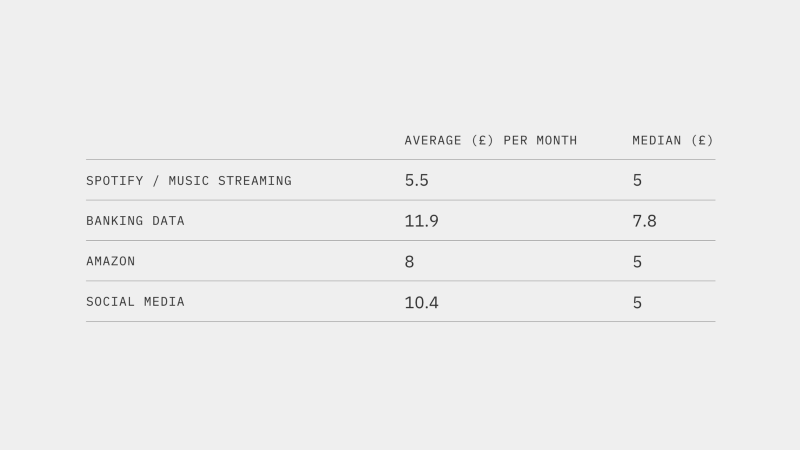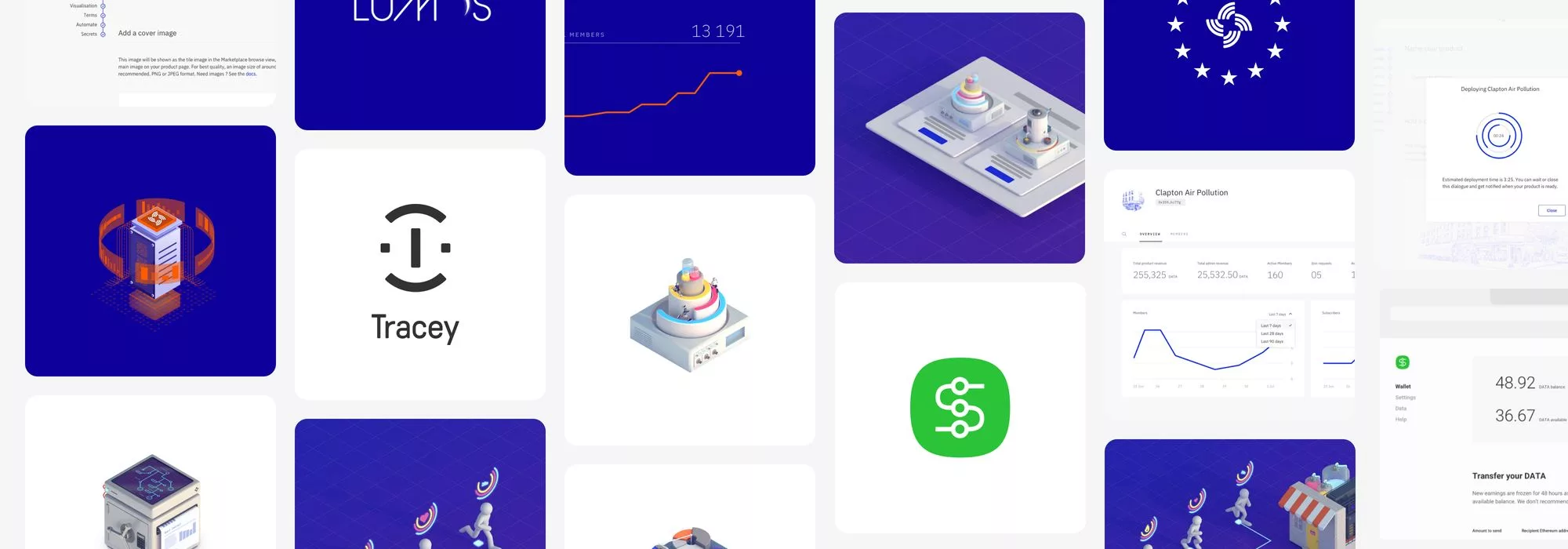
The research commissioned last month by Streamr, and carried out by our friends at Wilsome, was designed to shed a light on the public’s general attitudes to data ownership, data privacy and data monetisation, all of which can help Streamr understand what would compel the average person to join a Data Union.
To recap, Wilsome spoke to 21 men and women from around the world, categorised as ‘tech-confident’ Early Adopters and the ‘slightly behind the curve when it comes to new technology’ group, the Early Majority. The Early Adopter and Early Majority categories are key audiences in the lifecycle of a tech offering that can mean the difference between muted interest and mass adoption. More about these audiences is covered in this interesting Ted Talk by Simon Sinek:
Wilsome’s research uncovered several key learnings that Streamr must utilise to shape the Marketing & Communications strategy around Data Unions. These are that, when it comes to the lack of individual data ownership:
- Most people are not aware of a solution
- When they become aware of a solution, they like it
- Money for nothing, as part of this solution, appeals
- People do want visibility and control of their data
- People want to know who’s buying their data
- Crypto is not a barrier to adopting a solution
If you haven’t already, do read that blog in order to take a deeper dive into the specifics. We found the research project enlightening on the whole, and the conclusion pointed to a solid endorsement for Data Unions (‘when they become aware of a solution, they like it’).
So this is the moment at which the Streamr Marketing & Comms team could choose to congratulate ourselves over the fact that the majority of our instincts have been correct when it comes to building out Data Unions. Our decision last year to prioritise Data Unions, with the launch of Swash and the live Data Union at Mozfest, tapped into a general move that individuals are making towards data ownership and monetisation. We’ve also seen organic adoption of Data Unions happen without a strong marketing push; Swash has upwards of 1000 active downloads at the time of writing. However, we’re not relaxing. In fact, there’s a lot of work to be done to get to the next phase of adoption.
How do we push beyond awareness of a product into the type of devotion that has people queuing outside of the Apple store at 6am, or evangelising to their friends? Needless to say, while there is great potential for public understanding of Data Unions, there are several hurdles to sparking public belief in Data Unions that any marketing efforts by Streamr must overcome.
Table of Contents
1. Most people are not aware of a solution
It’s one step before this. Most people are not aware there is a problem. Wilsome rightly posited that “a passive relationship with personal data is the biggest barrier”. The research uncovered an unspoken passivity when it comes to data privacy and the current power balance between individuals and corporations.
People expressed muted and even somewhat bemused concern that devices are listening to us without permission. But personal responsibility or action was limited on the whole. They were “more likely to express a sense that they know they should be concerned, but in reality [data privacy is] a low priority for them because they don’t know how to address the problem.”
When we did get respondents to start thinking of the problem in terms of their data being mined and misused, they felt the Data Union framework may be overpromising or overly ambitious about changing the status quo. I was in attendance at the group sessions in London and I noted that the ‘strength of the collective to topple the Powers That Be’ type of Data Union messaging was not well understood or received by participants.
Because Streamr’s Data Union framework offers only an alternative to big tech’s data monopoly (and not an active data-mining blocker that stands between your data and Facebook, for example), the ‘collective/disruptive’ messaging around Data Unions wasn’t the strongest selling point. This forced us to acknowledge that the Data Union ‘solution’ to the lack of individual data ownership is centred primarily on data dignity — personal benefits and empowerment — rather than the promise of social change and an overthrow of big tech, who in reality won’t stop data mining until the law or scandal force them to. This has helped shape our understanding of what to prioritise in Data Union messaging.
Data Unions must become less about problem-solving and more about enriching and changing the way people perceive data ownership. To put it in product terms: joining a Data Union like Swash is less like toppling the tech ruling class, and more akin to people in the UK moving in droves to a subscription model for television. It was a steady but monumental change, but now the subscription model is forcing the conversation to scrap the government-imposed TV license. It started a personal choice, which then went on to have social implications.
Although the product is revolutionary, that doesn’t mean people are attracted by a revolutionary message. A Data Union like Swash is not going to get adoption by trying to sell the benefits of one product vs. another. It’s about getting the public excited about a new product in the first place.
So before the public are able to make a decision about whether they should trade their data, they need to be made aware of the possibility, and have the concepts of data monetisation, trading and Data Unions explained to them. Most people are not yet aware that data trading at an individual level is possible. They need to understand the personal benefits of trading their data, the most compelling of which our respondents identified as transparency and rewards. To get this message across, without overpromising on Data Unions as a solution, in early messaging we must focus on the visibility and the potential for personal capital Data Unions will give their members.
2. When they become aware of a solution, they like it
Where ‘defeating tech giants’ didn’t land as a Data Union concept in the room, crowdselling data certainly landed as a concept once people viewed a demo of Swash. The problem here, from a marketing perspective, is that most people, outside of a formal research exercise setting, will not spontaneously sit and watch a 10-minute video where a company explains their technological framework to them.
Communicating and marketing Data Unions will begin with proactive efforts to find the audience in the places they are spending time, to make them aware of Data Unions that matter to them and those individual benefits, outside of the technical framework. Using a product like Swash as an example, the first message is not: ‘Have you heard of Data Unions?’. Rather it should be: ‘You surf the web every day… why not earn money from it?’.
What does marketing look like beyond that first awareness-raising trigger? Although individual tactics will need to be shaped and deployed based on the specific Data Union Product, content such as consumer-style videos with a ‘Did you know?’ tone — again, revealing benefits to a user, not describing the tech — are a great first step. Reviews of the product, and general education about the function of the Data Union app, could all be effective marketing tools thereafter, supported by advertising.
Clear information about what the app does and a clear call to action around how to try it easily, will spark interest and engagement from users. To transform a user into an evangelist, we recommend providing content that supports them in evaluating the product, shows them how to install the tool in a straightforward but personalised way, allows them to see the benefits of being part of a Data Union, and eventually allows them to teach others about the product and benefits of it. Basically the marketing will take the user on a journey where they understand the benefits to them before engaging, learning more and communicating those benefits forward.
3. Money for nothing appeals
As part of the research, Wilsome enquired how much people would expect to earn from joining a Data Union and the figures were surprisingly modest. This was in no small part because people felt they were already giving data away for free, so why not do the same thing but earn some capital, however small that capital might be?

Financial gain and transparency were larger motivators for adoption than the collective angle and inspired most of the positive feedback. It’s an unsurprisingly individualistic outlook, so simplicity will be a good approach for marketing here.
To increase user adoption of Data Unions, messaging must pitch Data Unions in a way that makes users understand how a Data Union app will plug into their daily lives and benefit them financially. Messaging will emphasise the maximum rewards versus minimal investment (time spent installing an app vs. passive earning). To keep using the tool, they will need to see continuing rewards and also have clear and transparent information about how to monitor and exchange their earnings.
4. People want visibility and control
As previously mentioned, although control did emerge as an attractive prospect, we must be careful when messaging this concept. The way in which Data Unions exercise power should be explained, making it clear that the individual user’s data is not exclusive to the Data Union, even though it will likely contribute to social change in the wider sense. We would urge developers and businesses who create Data Union to introduce this distinction explicitly as part of their onboarding or FAQ content.
Visibility is the stronger selling point here out of the two, since Data Unions can offer visibility on the data that is being sent to a Union, something which has been denied (and still is denied) by tech giants. Messaging about visibility should be as prominent as messaging about income generation when pitching Data Union products, because these aspects of the concept are easily understood, can be demonstrated and provide tangible benefits to new users.
5. People want to know who’s buying
Data Union app builders must also leverage any marketing momentum by addressing the questions and concerns that users may have early on. As well as seeing exactly what data is being collected, many respondents were concerned about how to monitor where their data is going. Knowing the destination of their data, and what sort of companies might be buying it, could be a motivating factor that makes people feel comfortable joining a Data Union in the first place.
Data Union Products with clear answers to these concerns will build trust and credibility with their users. If these answers are not available, it is important that the reasons why not are addressed at the very least. If full data buyer transparency is available, this could be a great selling point for a Data Union product and a bridge into generating discussions about privacy rights, or an opportunity to partner with consumer protection groups for future campaigns.
6. Crypto is not a barrier
For the Early Adopters, crypto and cash were fairly interchangeable, but in the awareness-raising phase, where we would hope to prompt the Early Majority into action, it would be advisable to also show ways to exchange crypto as part of the ‘Did you know?’ style content. This angle could also open up opportunities for app builders to partner with exchanges or other outlets willing to accept crypto payments, for cross-promotional activity. Although the latter type of promotion would likely happen further into the campaign cycle, when users are steadily earning.
In conclusion, these are just some of the marketing principles — fully backed by research into potential users — that Streamr can apply to support Data Union products on the Marketplace. Judging from the market trends we have seen, there are plenty of users out there who are primed to receive the messaging and offering. Streamr will fully support app builders to make sure their Data Union products are marketed in a way that emphasises the individual benefits for potential users, and addresses any reservations those potential users might have when they first learn about Data Unions.
This marketing support to hone in on the unique selling point of each Data Union product goes beyond the Community Fund support Streamr offers to help build an idea. If you build a viable Data Union on the Streamr stack, the project will be excited to support you with the most appropriate campaigns to ensure adoption. So if you’re thinking of building a Data Union app, now is the time!
If you’d like to contact Streamr for more insights about marketing Data Unions, please email contact@streamr.network










